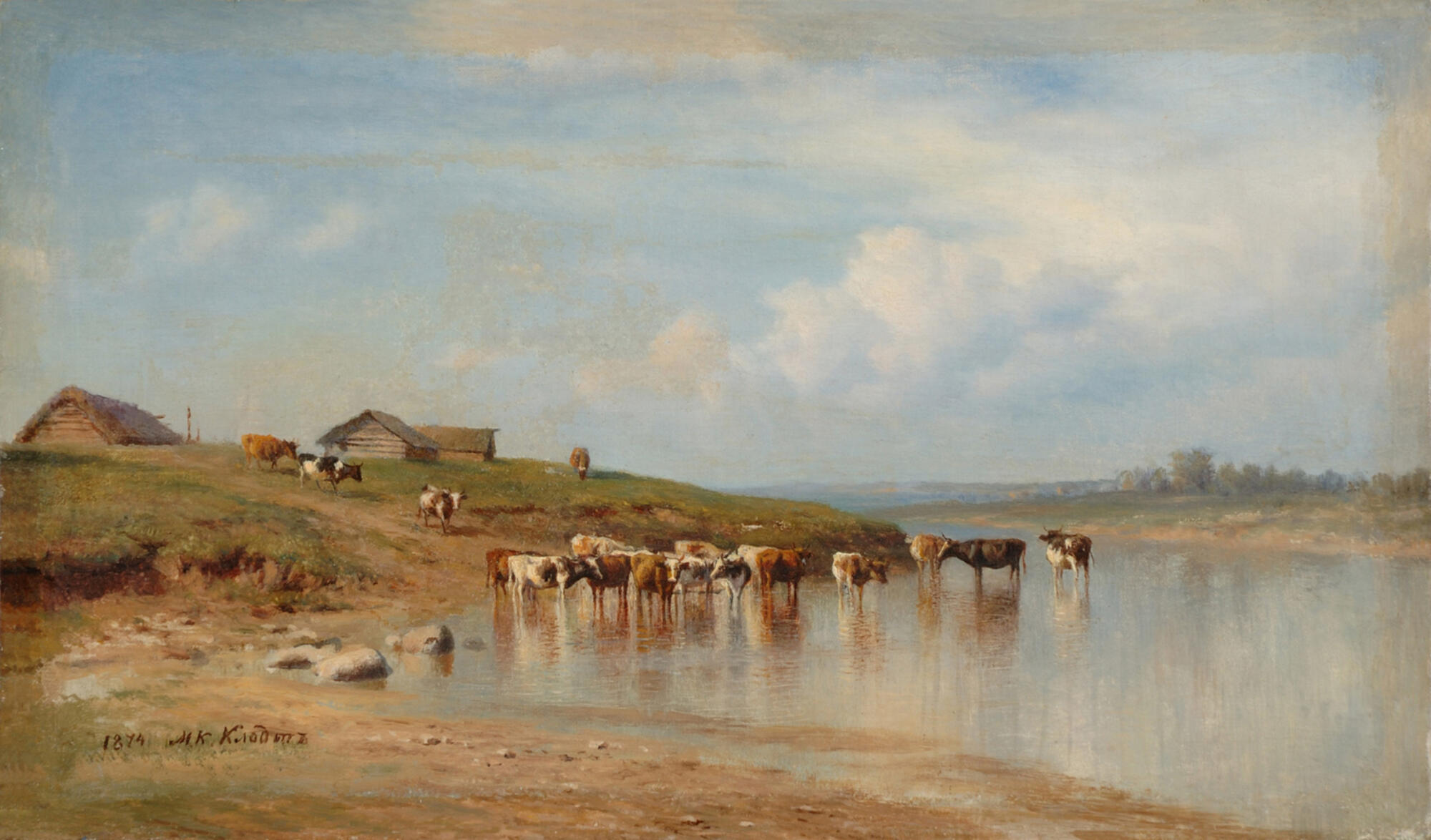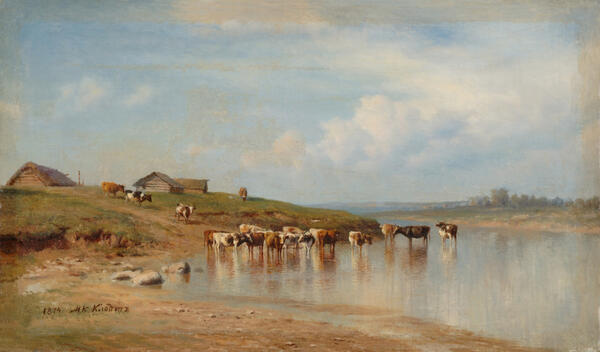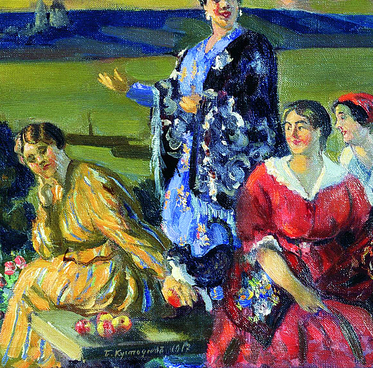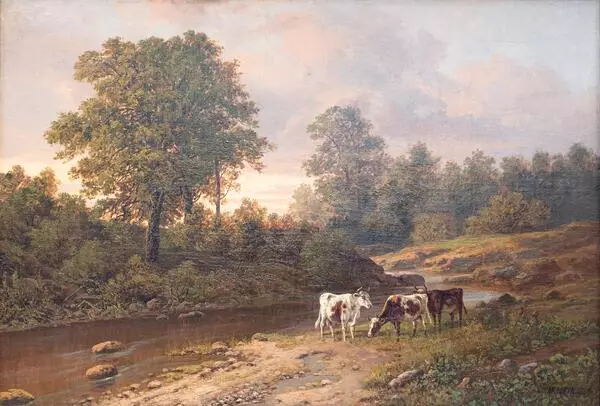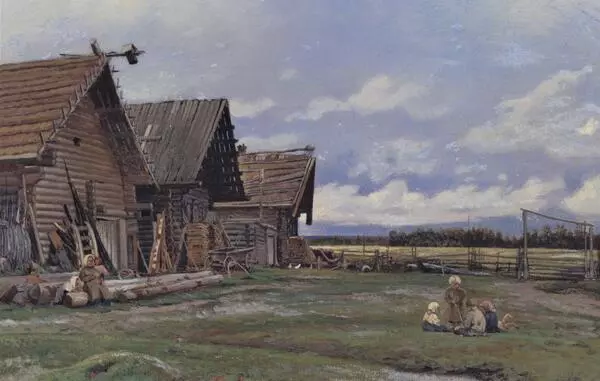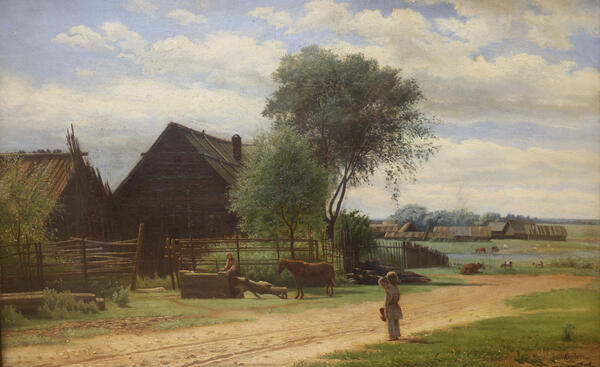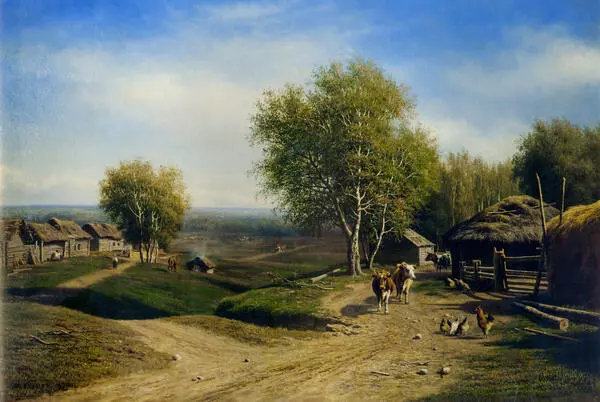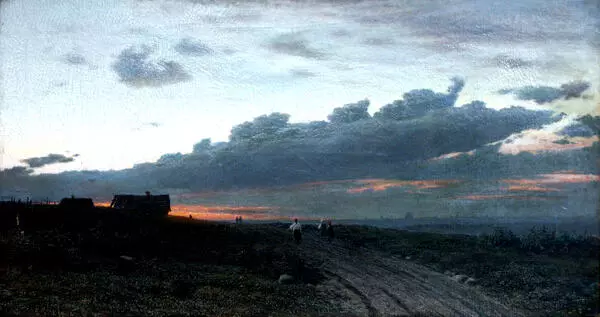The permanent exhibition of the Chelyabinsk State Museum of Fine Arts contains the painting ‘Cows at a Watering Place”by the Russian landscape painter of the second half of the 19th century Mikhail Clodt.
Mikhail Clodt was born on December 30, 1832 in St. Petersburg into the family of artists Clodt von Jürgensburg. His father, Major General of Artillery Konstantin Clodt, was fond of wood engraving, and his uncle, Pyotr Clodt, was one of the best sculptors in Russia of that time.
At first, Mikhail Clodt entered the Corps of Mining Engineers, but he did not like his studies, and the future artist often missed classes. It was drawing that Clodt never skipped.
In 1851, at the age of 18, he entered the Imperial Academy of Arts. In 1853, for one of his student paintings, Clodt was awarded a silver medal (2nd class) and a scholarship from the Society for the Encouragement of Artists. According to historians, he turned down the scholarship in favor of his fellow students in need, and the money was transferred to one of the two Kreitan brothers.
In the late 1860s, Mikhail Clodt was already a famous artist with his special recognizable style of painting. His works are characterized by realism of the image, impeccable drawing with scrupulous elaboration of details, mastery of perspective solutions, rigor and harmony of composition, thoroughness in drawing foreground objects and generalization in distant objects.
Clodt was the first Russian artist to combine genre painting with a landscape. The art critic Vladimir Stasov wrote:
Mikhail Clodt was born on December 30, 1832 in St. Petersburg into the family of artists Clodt von Jürgensburg. His father, Major General of Artillery Konstantin Clodt, was fond of wood engraving, and his uncle, Pyotr Clodt, was one of the best sculptors in Russia of that time.
At first, Mikhail Clodt entered the Corps of Mining Engineers, but he did not like his studies, and the future artist often missed classes. It was drawing that Clodt never skipped.
In 1851, at the age of 18, he entered the Imperial Academy of Arts. In 1853, for one of his student paintings, Clodt was awarded a silver medal (2nd class) and a scholarship from the Society for the Encouragement of Artists. According to historians, he turned down the scholarship in favor of his fellow students in need, and the money was transferred to one of the two Kreitan brothers.
In the late 1860s, Mikhail Clodt was already a famous artist with his special recognizable style of painting. His works are characterized by realism of the image, impeccable drawing with scrupulous elaboration of details, mastery of perspective solutions, rigor and harmony of composition, thoroughness in drawing foreground objects and generalization in distant objects.
Clodt was the first Russian artist to combine genre painting with a landscape. The art critic Vladimir Stasov wrote:
